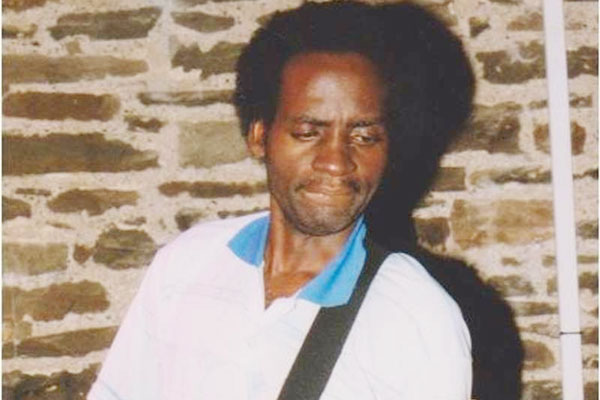
ALTHOUGH I grew up exposed more to Leonard Dembo’s music because of my favourite primary teacher, Amon Muzariri, who enjoyed the music so much, I had no idea what genre it was.
SOUND TRACK: Tafadzwa Kachiko
Those who were in love with music in the early 1980s when the sungura was popularised strongly believed it was pioneered by Ephraim Joe and the Sungura Boys, which counted many notable future hit-makers as members. These included John Chibadura, Simon Chimbetu, Naison Chimbetu, Ronnie Gatakata, Mitchell Jambo, Moses Marasha, Never Moyo, Bata Sinfirio and System Tazvida.
It was after reading the recently launched book, The Mbira-Sungura Guitar Styles of Zimbabwe, which cites producer and instrumentalist Clive “Mono” Mukundu, Nicholas “Senior Lecturer” Zachariah and Innocent Mjintu, that I realised there was more to the genesis of sungura in the country.
The book traces sungura’s origins to South Africa’s Marabi-Kwela style and the East African type of rhumba music, benga, which originated in Kenya.
Thanks to Music Crossroads Zimbabwe, Global Music Academy, Music Crossroads International and the German Foreign Office for embarking on such a documentation drive, music lovers are now able to discover the roots of some of their favourite music.
Sungura has remained a contending genre despite the popularisation of dancehall music, Afro-pop and hip hop in Zimbabwe. It is characterised by lead vocals with catchy choruses, fast guitar lines played by two or three guitarists, bass and drums.
A lot of music lovers have enjoyed listening to the genre because most musicians touch on real issues that affect the society although some regard it as the music of the rural and uncultured.
- Chamisa under fire over US$120K donation
- Mavhunga puts DeMbare into Chibuku quarterfinals
- Pension funds bet on Cabora Bassa oilfields
- Councils defy govt fire tender directive
Keep Reading
The genre is loosely traced to Marabi-Kwela, whose greatest exponents were Simon Mahlathini Nkabinde and the Soul Brothers. The style became popular and earned the name Simanje manje. It is cited as the major influence on development of sungura.
However, unlike Simanje manje, benga had a great impact on the country’s music history particularly the development of sungura. benga uses a fast-paced rhythmic beat and bouncy finger-picking guitar technique. It differs sharply from South Africa’s Simanje manje. Its peculiarity comes from the combination of a sharp lead guitar overriding the rhythm and bass.
The genre’s biggest producer in the 1970s Oluoch Kanindo saw the commercial potential of Congolese rhumba and encouraged his band to imitate and this saw the emergence of benga that was fused with rhumba.
“The instability that rocked Democratic Republic of Congo (DRC) after the death of Patrice Lumumba saw rhumba musicians fleeing and finding refuge in other countries. Some settled in Kenya and joined Kenyan musicians and started playing a new style that was slightly different from how they had played the original rhumba,” Mukundu said during the book launch.
In Zimbabwe, this music became so popular that the locals named it ‘kanindo’ after the producer.
Kanindo, a former technician with the Kenya News Agency and the Voice of Kenya, was a music production guru during his time. He had a plethora of labels such as Longwe, Sungura, Oyundi and Duol
Sungura is a Swahili word for rabbit and it too became the name given to a faster variation of the music, a spin off from kanindo.
Much of sungura styles were borrowed from kanindo which was imported by liberation war fighters who had received training in East Africa, especially Tanzania and Kenya. It is said that many fighters during the liberation war used to dance to kanindo records during the night vigils known as pungwe.
It was also imported into Zimbabwe through AIT Records of Kenya and after seeing the genre’s potential, local musicians that had been fascinated by kanindo started imitating it. Local musicians who popularised kanindo include Knowledge Kunenyati of Kasongo Band as well as the Marxist Brothers whose songs took on a kanindo flair.
Kanindo was borrowed, repackaged and gave birth to a new style. The sungura record label, which was written boldly on LPs, saw Zimbabwean musicians subsequently naming the invented guitar style sungura.
The Sungura Boys is popularly known as the early sungura band and produced stars including Tazvida, Chimbetu and Chibadura, marking the growth of the genre. Sungura also gave birth to subgenres such as dendera music by the Chimbetus and Zora music by Leonard Zhakata.
“In Zimbabwe we have a problem that if someone comes up with a subgenre, they claim that it’s totally a different genre yet it will be falling under sungura,” Mukundu said.
Dance plays a major role in sungura and many bands have dancers who exhibit superbly choreographed dancing styles. It is believed that the earliest sungura dance style was chibhasikoro adopted from farm workers and people who lived in rural areas. The dance has moves that resemble a cyclist pedalling a bicycle.
Another version says chibhasikoro was developed by the Kasongo Band which was made up of liberation war fighters who had been to Tanzania. The fighters are said to have adopted it from Cavacha, a dance that was popular in East and Central Africa in the 1970s through bands like Zaiko Langa Langa and Orchestra Shama Shama.
New dancing styles came into play including the Chimbetus’ dendera dance. Discussion about sungura dances cannot be closed without mentioning Alick Macheso who has choreographed a lot of styles over the years. These include Borrowdale, Razor wire, Kangaroo, Kochekera and Zora Butter.
While Zimbabwean musicians cannot be credited much for the origins of sungura and its name, acknowledgement should be given to Leonard ‘Picket’ Chiyangwa and Jonah Sithole for originating the mbira guitar style.
Although there is no agreement as to who actually came up with the style, the two are believed to be the pioneers, and made a significant contribution to the development of a unique indigenous guitar style. They were both part of Thomas Mapfumo’s Blacks Unlimited Band.











